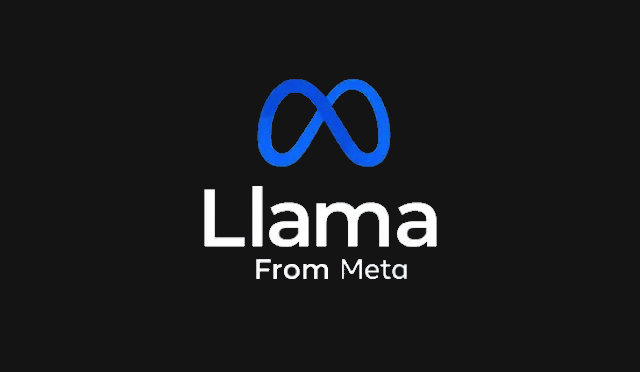By ATS Staff - November 9th, 2020
Artificial Intelligence Latest Technologies Machine Learning
LLaMA (Large Language Model Meta AI) is an advanced language model developed by Meta (formerly known as Facebook). Announced in 2023, LLaMA was designed to push the boundaries of natural language processing (NLP) and enhance AI capabilities in generating human-like text, answering questions, and assisting in complex problem-solving tasks. The model aims to be more efficient than its predecessors, using fewer resources while achieving competitive results in various language tasks.
What is LLaMA?
LLaMA is a family of foundational models for NLP, built to optimize the trade-off between model size and performance. Meta released it with the intention of helping researchers and developers access a powerful tool for language-related tasks without the need for massive computing power or resources.
The LLaMA family comes in several sizes, ranging from 7 billion to 65 billion parameters, with smaller models designed to be more accessible and easier to run on consumer-grade hardware. Despite being smaller than models like OpenAI’s GPT-3, LLaMA has proven capable of delivering comparable performance, particularly in areas like text generation, language translation, and question answering.
Key Features of LLaMA
- Efficiency: One of the standout features of LLaMA is its efficiency. Smaller models are optimized to run on less computational power, which lowers the barrier to entry for researchers and companies that don’t have access to extensive computing infrastructure. This makes it a valuable tool for experimentation and development.
- Performance: LLaMA has demonstrated high performance in benchmark tests, competing effectively with larger language models like GPT-3 and Google's PaLM. It excels in a variety of NLP tasks, including natural language understanding, contextualized text generation, and code synthesis.
- Accessibility: Meta has placed a significant emphasis on making LLaMA accessible to the global research community. By releasing multiple versions of the model, including a smaller 7 billion parameter version, Meta allows users to experiment with advanced AI without the need for supercomputers.
- Open Science Approach: Meta’s release of LLaMA highlights a commitment to open science. By offering access to the model’s weights and encouraging collaboration, the company promotes transparency and democratization in AI research. This approach is intended to help researchers address real-world challenges, such as bias, misinformation, and ethical concerns in AI.
Applications of LLaMA
LLaMA’s capabilities allow it to be used in a wide range of applications:
- Text Generation: LLaMA can generate coherent and contextually relevant text, which makes it useful for content creation, customer service automation, and writing assistance tools.
- Translation: Like other advanced language models, LLaMA can perform language translation tasks, enabling cross-lingual communication and data processing.
- Code Generation: LLaMA has the potential to assist developers by generating code snippets or helping to debug programs, streamlining the software development process.
- Research: The open access model makes LLaMA an excellent tool for AI researchers aiming to study the inner workings of language models, improve NLP techniques, or address ethical issues in AI development.
Challenges and Limitations
While LLaMA shows a great deal of promise, it still faces challenges inherent to large language models. One major issue is the risk of generating biased or harmful outputs, as models like LLaMA learn from vast datasets that may contain problematic information. Meta has taken steps to address this, but ensuring the ethical use of AI models remains an ongoing challenge for the industry.
Additionally, even though LLaMA is more efficient than some of its competitors, its largest versions still require considerable resources to train and deploy effectively. While Meta's commitment to open science is notable, the practical deployment of LLaMA at scale may still be beyond the reach of smaller companies or individual developers without access to high-end hardware.
The Future of LLaMA and AI
LLaMA represents an exciting development in the field of AI and NLP. By balancing efficiency and performance, it offers a scalable solution that could see widespread adoption in industries ranging from tech to education, and even healthcare. As Meta continues to refine and improve its models, LLaMA’s capabilities are expected to grow, further pushing the boundaries of what AI can achieve in language understanding and generation.
In conclusion, LLaMA stands out as a significant leap forward in the democratization and accessibility of advanced language models. With its open access, emphasis on efficiency, and competitive performance, it has the potential to shape the future of AI-driven applications across the globe.
Popular Categories
Agile 2 Android 2 Artificial Intelligence 50 Blockchain 2 Cloud Storage 3 Code Editors 2 Computer Languages 12 Cybersecurity 8 Data Science 15 Database 5 Digital Marketing 3 Ecommerce 3 Email Server 2 Finance 2 Google 6 HTML-CSS 2 Industries 6 Infrastructure 3 iOS 3 Javascript 5 Latest Technologies 42 Linux 5 LLMs 11 Machine Learning 32 Mobile 3 MySQL 2 Operating Systems 3 PHP 2 Project Management 3 Python Programming 26 SEO - AEO 5 Software Development 44 Software Testing 3 Web Server 7 Work Ethics 2